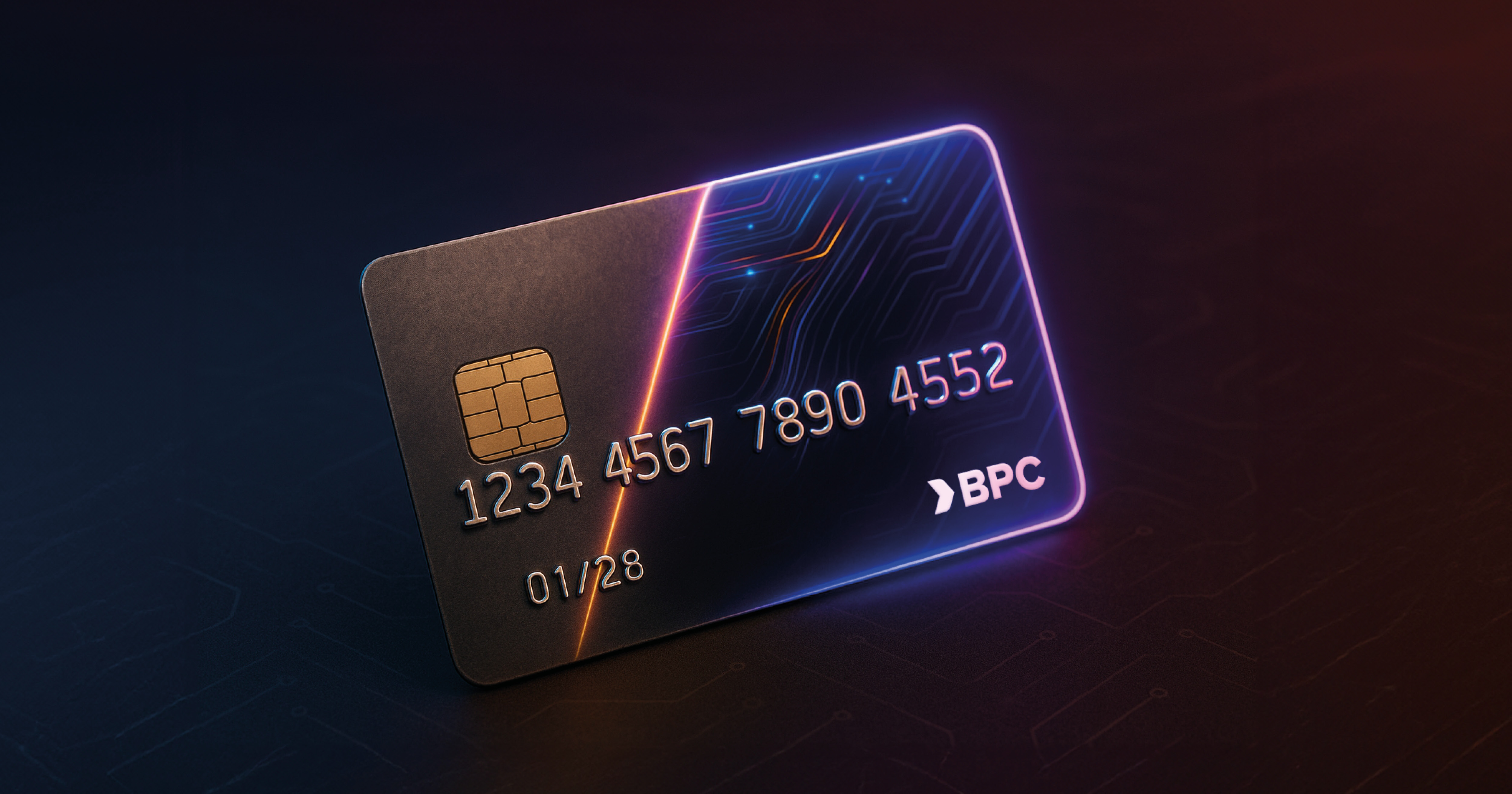How global payment trends are rewriting Issuers’ playbook

Experience seamless, efficient and customizable ATM management
End-to-end, secure, and integrative payment solutions
A white-label, user-friendly platform for secure, versatile payment solutions
Engaging employees to learn, improve and master BPC solutions
Robust fraud detection, risk-based authentication, and multi-institutional security
Streamlining payments and enhancing merchant experiences with seamless solutions
Streamlining and securing multi-network transactions while enhancing efficiency
Deliver hyper-personalized experiences with BPC AI
Operate seamlessly with large data sets, source documents, and generate insightful reports with BPC AI Virtual Assistant.
From enabling banks to enabling banking
The building blocks for next gen banking delivered today
Global banking fit for local needs
Stack to Service - white label payment excellence
More and Better Together
Mass transit the personal way
Enhancing the real life of citizens
Mass transit the personal way
Connecting payment rails to the last mile
Creating relevant industry-led ecosystems
Integrate our APIs on your apps.
The latest developer docs, including tutorials, sample code, and API reference.
Experience seamless, efficient and customizable ATM management
End-to-end, secure, and integrative payment solutions
A white-label, user-friendly platform for secure, versatile payment solutions
Engaging employees to learn, improve and master BPC solutions
Robust fraud detection, risk-based authentication, and multi-institutional security
Streamlining payments and enhancing merchant experiences with seamless solutions
Streamlining and securing multi-network transactions while enhancing efficiency
Deliver hyper-personalized experiences with BPC AI
Operate seamlessly with large data sets, source documents, and generate insightful reports with BPC AI Virtual Assistant.
From enabling banks to enabling banking
The building blocks for next gen banking delivered today
Global banking fit for local needs
Stack to Service - white label payment excellence
More and Better Together
Mass transit the personal way
Enhancing the real life of citizens
Mass transit the personal way
Connecting payment rails to the last mile
Creating relevant industry-led ecosystems
Integrate our APIs on your apps.
The latest developer docs, including tutorials, sample code, and API reference.

Plastic still rules global payments, yet its position weakens. From London commuters who now tap a virtual card on their phone to travel to South-African shoppers who pay with QR, consumers are rapidly redefining “card” as a physical necessary asset. For issuers, that means card management can no longer stop at embossing plastic: the technology they use must orchestrate every token, wallet and real-time fraud check from the same platform
Where the card markets sit today
According to ECB, Europe’s card market remains vast, counting roughly 669 million payment cards—about 1.9 per resident and logging 36.5 billion transactions in the end 2023 as according to recent uk-finance report; yet that plastic dominance is softening as contactless already make up three-quarters of UK debit purchases, and more than one in five residents of UK now use a mobile wallet every week, even while overall EU card spending is still growing approximately 10% YOY.
Across the Middle East, the United Arab Emirates illustrates the shift: card purchase value rose 14.6% in 2023 to AED 451 billion and is on course for a 10.6% CAGR that will push volumes past AED 764 billion by 2028, while the prepaid-card and digital-wallet segment is itself forecast to double from USD 5.7 billion to more than USD 10 billion in the same window, propelled by instant-payments technology such as the central bank’s new Aani platform.
South Africa tells a similar story of cards growing: debit still accounts for 74% of the nation’s card market and contactless penetration already tops 68%. The wallet usage surged over last year with nearly half of consumers now keeping a virtual card on their phone, attracted by the safety of transactions that Visa stated run six times lower than with physical plastic.
Meanwhile for APAC, and in particular, the Philippines, traditional credit cards have expanded to 11.2 million accounts in few years, yet the preference shifts towards the mobile payments: GCash alone have over 81 million users and the central bank reports that P2P payments over its QR Ph scheme rose 604% in 2024 to 15.2 million transfers, signalling how quickly the migration from plastic to tokens, wallets and QR codes occur.
What incumbents must do
Traditional banks that continue to measure performance primarily by the raw count of physical cards in circulation are moving toward strategic obsolescence. Customer demand has expanded beyond embossed plastic to wallets, merchant payments with QR codes, and instant payments. To remain commercially viable, a modern Card Management technology must therefore orchestrate these instruments through a single, cloud-native platform capable of instant issuance, token lifecycle management, digital services provision and integrated fraud-prevention analytics at scale.
That is precisely the idea and design behind the next-generation SmartVista card management solution: one platform, multi-product, scheme-agnostic and future-proven. Whether a UK bank migrating millions of cards or a Philippine digital bank rolling out its first virtual debit, or African financial institution rolling-out wallet payments the same stack handles issuing, tokenization, wallet provisioning, clearing, settlement and AI-driven fraud management on a single platform, provided on premise, as a service or as a managed service model.
Modernise now or watch the market walk away
The choice was already made, and traditional banks need to play along: convenient, token-first, and mobile-native payments are becoming default. Banks that still run siloed, legacy card engines risk three-day outages and three-year product cycles. Banks that embrace next-generation card management will ride the wallet wave, monetise new data streams and defend interchange long after the last plastic card is recycled.
Modernise your card infrastructure this year before your customers choose those who have already done so.
Contact BPC to learn more about our modernisation capabilities.